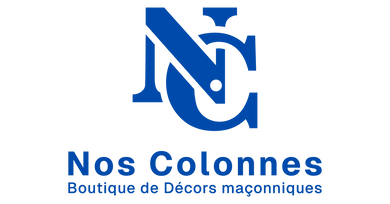Lodge of St John - Swedish Rite
Swedish Rite
If Swedish Freemasonry was originally of French inspiration, Carl Friedrich Eckleff (1723-1786) founded in 1759 a Chapter of High Degrees with a Christian, Rosicrucian and Templar connotation, influenced by the writings of the Swedish mystic Emmanuel Swedenborg (1688-1772). In 1761, he became Deputy Grand Master of the Grand Lodge of Sweden and introduced his Rite, which he slightly modified for this purpose. Allied and rival of the Strict Templar Observance, the Swedish Rite was also introduced in Germany and Johann Wilhelm Kellner von Zinnendorf (1731-1782) seized it to build his own Masonic system.
The Swedish Rite is divided into three series:
Lodge of St John
I. Apprentice
II. Fellowcraft
III. Master Mason
Lodge of St Andrew
IV/V. Apprentice and Companion of St Andrew
VI. Master of St. Andrew
Chapter
VII. Very Illustrious Brother, or Knight of the East
VIII. Most Illustrious Brother, or Knight of the West
IX. Enlightened Brother
X. Very Enlightened Brother
The 11th Degree is a Grand Lodge Degree:
XI. Most Enlightened Brother, Knight and Commander of the Red Cross.
There is also a real Order of Chivalry to reward some Freemasons, which is not considered as a Degree: the Order of Charles XIII.
The Swedish Rite, to which you cannot belong if you are not a Christian, is mainly widespread in Sweden, Denmark, Norway and Iceland, and to a lesser extent in Germany and Spain.
In this collection of Nos Colonnes, you will find the Masonic Regalia (aprons, collars, jewel...) of the Lodge of St. John of the Swedish Rite.




























